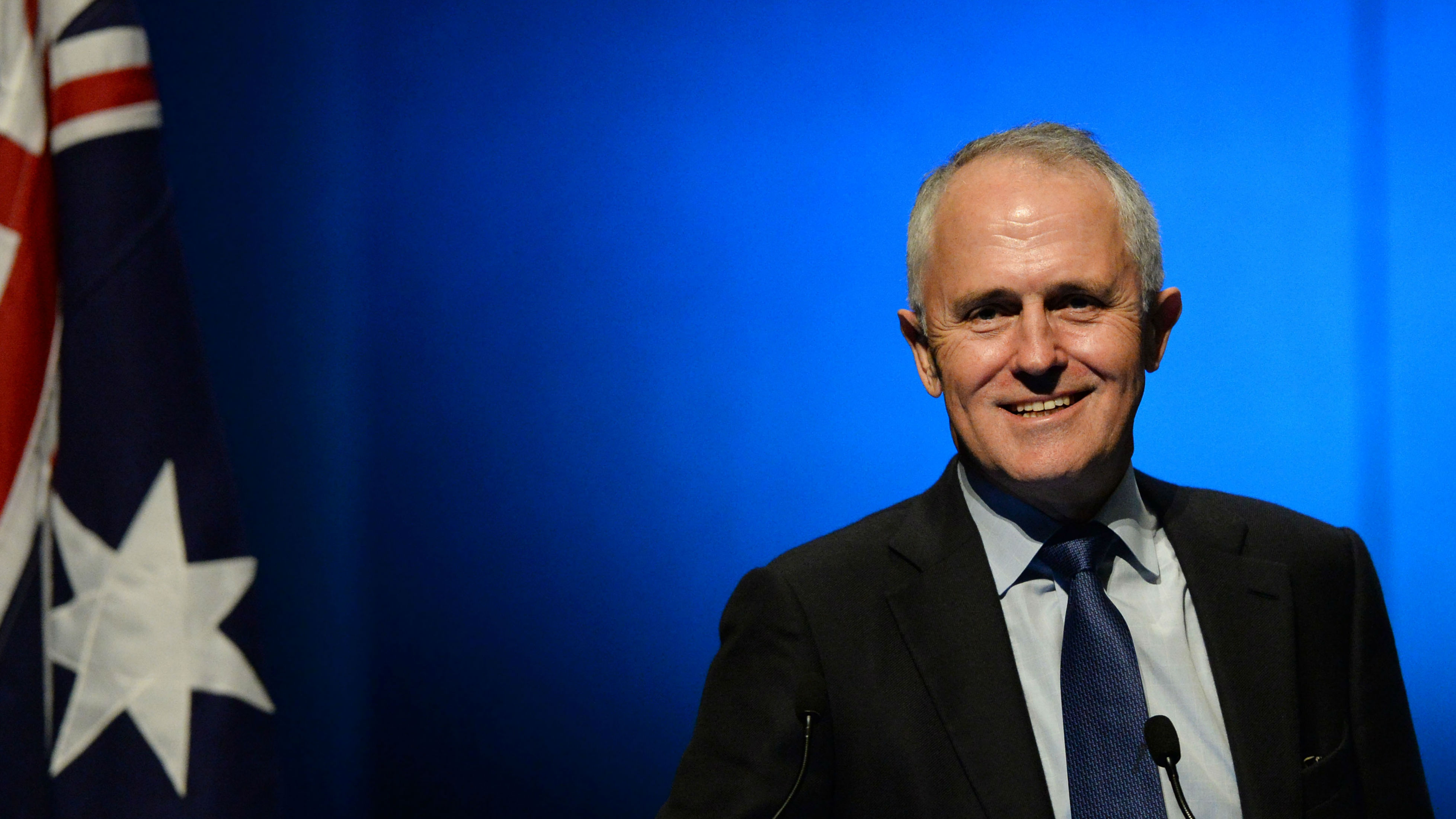Donald Trump calls Malcolm Turnbull ‘weak and ineffective’ in spat with former prime minister
- Written by Michelle Grattan, Professorial Fellow, University of Canberra

Donald Trump has attacked Malcolm Turnbull as “a weak and ineffective leader” after the former prime minister claimed the US president’s style of behaviour was likely to benefit China and said Australia needed to pursue a policy more independent of the United States.
Trump lambasted Turnbull in a social media post, saying, “Malcolm Turnbull, the former prime minister of Australia who was always leading that wonderful country from ‘behind’, never understood what was going on in China, nor did he have the capacity to do so.
"I always thought he was a weak and ineffective leader and, obviously, Australian’s [sic] agreed with me.”
Turnbull, in an interview with Bloomberg, had said the world was now seeing a “much more undiluted Donald Trump the second time around”, and predicted China would take advantage of the president’s behaviour.
China’s President Xi Jinping “will aim to be the exact opposite of Trump. Where Trump is chaotic, he will be consistent. Where Trump is rude and abusive, he will be respectful. Where Trump is erratic, he will be consistent,” Turnbull said.That would build trust with countries and many would look at “China on the one hand, and Trump on the other and find China a more attractive partner”.
The Trump-Turnbull spat comes as the Albanese government this week awaits the president’s decision on its plea for Australia to be exempted from Trump’s tariffs on aluminium and steel.
The government remains pessimistic, as last-minute lobbying by Australia continues.
Trade Minister Don Farrell said on Monday “Australia and the United States are trusted partners and we are using every opportunity to make known to our friends in America the immense benefits of our partnership”.
Turnbull, whose government secured an exemption from tariffs on these products from the first Trump administration, said he thought it would be “a lot harder” to get one this time.
“Trump will be being told, and I suspect he’ll conclude himself, that you give one country an exemption, then you have to give another and another. And before long there are too many exemptions and you haven’t got much of a tariff. So I suspect it will be on everybody.”
Turnbull said that in his second term Trump was “more determined”. He had a team that was “totally on board” – he was surrounded by “yes men”.
If Trump’s policies triggered a wave of protectionism around the world “that’s clearly going to be bad for business everywhere,” he said.
Turnbull said it appeared the closer countries were to the US the more Trump “feels he can extract value from you, stand over you, extort you.
"Look at the business with Greenland. Is this Denmark’s reward for supporting the Americans in Afghanistan? To have their prime minister rung up and told that her country has to cede one of its territories?
"Is this Canada’s reward for decades of solidarity and alliance, that they should be told they’re just the 51st state and be threatened with tariffs that are going to send the country into a recession?”
(Former banker Mark Carney, who has just won his party’s vote to become Canada’s new prime minister, following Justin Trudeau’s decision to step down, made his claim to be the best person to deal with the trade battle with the Trump administration a central argument in his bid for the leadership.)
Turnbull said Trump did not subscribe to the same values Australia had in the past shared with America – he was not committed to the international rule of law and did not care about treaties and alliances. So Australia would have to work out “how we are going to defend ourselves and how we will pursue a more independent – independent of the United States – approach to international and security affairs”.
The former PM is organising a March 31 conference in Canberra to discuss the alliance and AUKUS in the age of Trump.




















